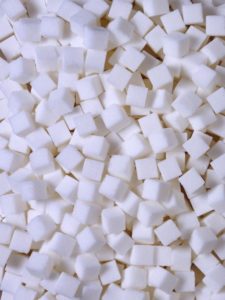You know, I come from a family of diabetics!
My dad and all of his brothers are type 2 diabetics.
Being a South Asian and then this genetic pre-disposition increases my chances of being diabetic drastically.
In fact at the age of 30 I was tested as a pre-diabetic, not once but twice.
It certainly was a wake-up call for me.
According to the Diabetes Association of Canada currently there are 11 million Canadians living with diabetes or prediabetes. Every three minutes, another Canadian is diagnosed. Chances are that diabetes affects you or someone you know.
That is exactly what sparked my interest in the disease, and the focus of my practice (besides gut health) on blood sugar imbalances, which initially may just show up as sugar cravings, lethargy, constant hunger and increased sleepiness.
So today let us look at some foods to eat and avoid with Diabetes in mind.
Foods to eat:
1. Fiber rich foods:
Soluble fiber helps control blood sugar levels, by slowing down the release of glucose into the blood stream and by delaying emptying of the stomach contents. Foods such as oat bran, legumes, beans, pectin found in fruits like apples, and vegetables like carrots are good sources of soluble fiber.
Adults generally speaking needs 25-50gms of fiber/ day. A medium sized apple can provide you upto 15 g fiber. While a cup of legumes can give you upto 10g fiber.
2. Vitamin K rich foods:
Both K1 and K2 were related to lower diabetes risk by 20%. K1 food sources are dark leafy greens, collard greens, spinach, salad greens, kale, Brussels sprouts. K2 food sources are fermented foods, kefir, miso, kombucha, naturally fermented sauerkraut (not with vinegar), and natto. Vitamin K is fat soluble vitamin so it’s a good idea to have fat present in the diet when eating these foods
3. A diet high in trace minerals:
Celtic sea salt, Himalayan salt, bone broths, shellfish, olive oil, nutritional yeast, sea vegetables such as kelp, dulse, kombu, and arame are good sources of minerals.
4. Cinnamon helps with blood sugar regulation.
Studies have found it can increase glucose metabolism 20 fold. Cinnamon is a cost effective way to drastically help regulate blood sugar levels. Anywhere from ¼ -1 teaspoon a day is a great starting point.
5. Chromium is a key mineral for diabetics.
Chromium is necessary for carbohydrate metabolism and proper functioning of the insulin receptors. Sources include nutritional yeast and molasses.
Taking a chromium supplement could also be a good option. However, consult with a qualified nutritionist or health care provider before taking any supplements.
Foods to Avoid:
1. Avoid fructose and high fructose corn syrup. Keep consumption below 25 grams a day-ideally below 15 grams a day.
2. Keep in mind that most processed and packaged foods contain fructose and high fructose corn syrup so it’s best to avoid these as much a s possible. To give a comparison there are 40g of fructose in a can of soda!
3. In the beginning it’s good idea to limit carbohydrate intake to 60 grams a day. This will drastically help normalize blood sugar levels and aid in weight loss. Healthy fats consumed with carbohydrates can help lower the glycemic index of a carbohydrate. Once blood sugar and weight is under control an increase to 72 grams of carbohydrates could be maintained in a diabetic diet.
If you want to know more about how to deal with insulin resistance, pre-diabetes or diabetes type 2, reach out.
My custom Health Transformation program is just the answer for you.
Let’s get your blood sugar levels balanced and energy levels up.
So if you are ready to be high-energy, healthy and happy-let’s get going.
It’s time.
XO
Tanuja






